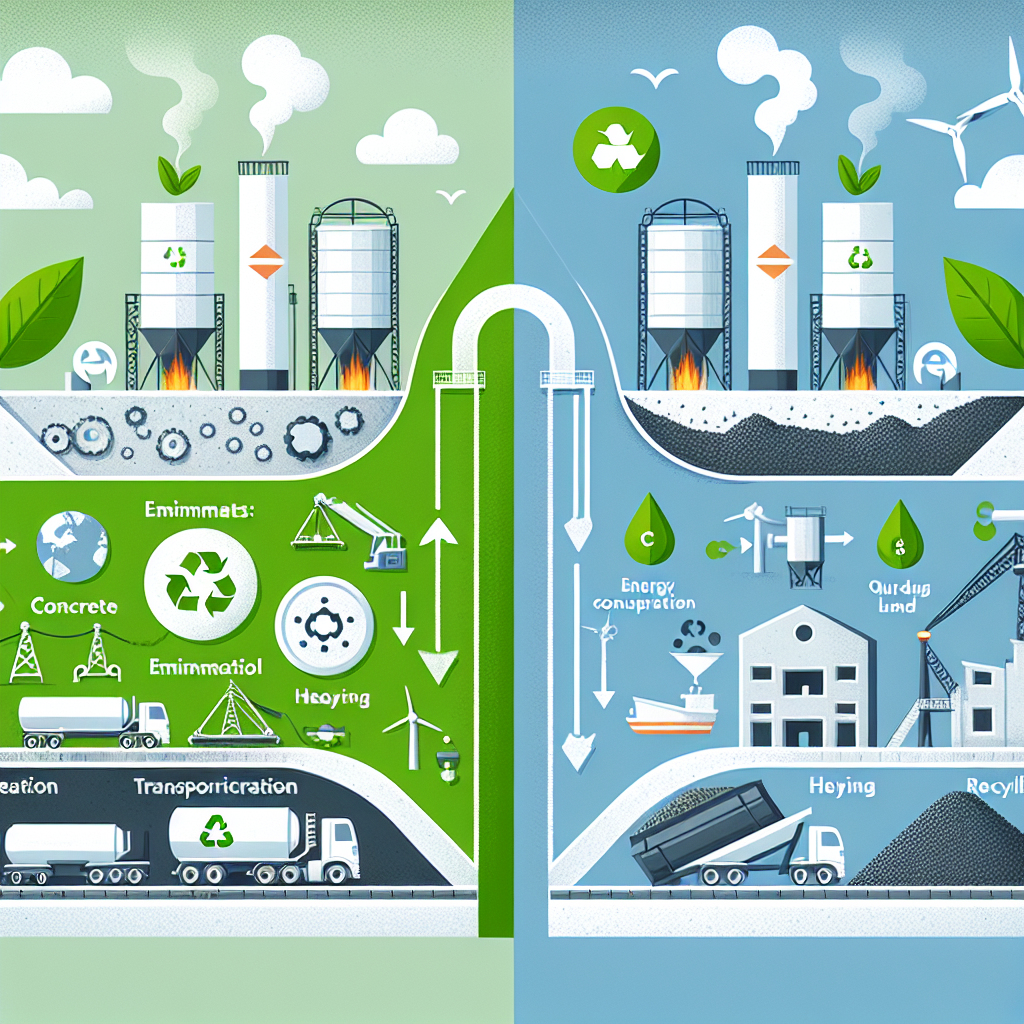When we think about the roads we drive on, the sidewalks we walk, and the buildings that shape our urban landscape, two materials come to mind: concrete and asphalt. While both are essential to modern infrastructure, their environmental impacts differ greatly. In this article, we will explore how concrete and asphalt compare in terms of sustainability, with a focus on their production, usage, lifespan, and end-of-life processes.
Understanding Concrete and Asphalt
What is Concrete?
Concrete is a composite material primarily made of cement, water, sand, and gravel. It is known for its strength and durability, making it a popular choice for constructing buildings, bridges, and roads. However, the production of cement, which is the key ingredient in concrete, releases a significant amount of carbon dioxide (CO2) into the atmosphere.
What is Asphalt?
Asphalt, on the other hand, is a byproduct of petroleum distillation. It is most commonly used for paving roads and parking lots. While asphalt is also durable and can withstand heavy traffic, its environmental footprint differs from that of concrete, primarily due to the materials and processes used in its production.
Production Footprint: Concrete vs. Asphalt
Carbon Emissions from Concrete
The cement production process is energy-intensive, with estimates suggesting it accounts for about 8% of global CO2 emissions. This high number is largely due to the calcination process, where limestone is heated to produce lime—a key ingredient in cement. Additionally, the transport of raw materials adds to its carbon footprint.
Lower Emissions from Asphalt Production
Asphalt production, while not without its environmental challenges, tends to have a lower carbon footprint per ton produced compared to concrete. The production of asphalt requires less energy and emits fewer CO2 emissions than cement. Moreover, a significant portion of asphalt used in paving is recycled from old road surfaces, further decreasing its overall environmental impact.
Lifespan and Durability
The Longevity of Concrete
One of the significant advantages of concrete is its longevity. Well-constructed concrete structures can last several decades, often exceeding 50 years with minimal maintenance. This durability means that fewer resources are needed for repairs and replacements over time, offering a more sustainable option in the long run.
Asphalt’s Shorter Lifespan
Asphalt, while durable, typically has a shorter lifespan of around 15 to 20 years before it requires resurfacing or replacement. This more frequent need for repair and maintenance can lead to higher resource consumption over time. However, the ability to recycle asphalt surfaces provides a more sustainable option compared to concrete when it comes to road maintenance.
End-of-Life Considerations
Recycling Concrete
Concrete is highly recyclable, and up to 100% of it can be reused in new construction projects. Crushed concrete can serve as a base material, reducing the demand for new materials and lowering the overall environmental impact. However, the recycling process can be energy-intensive, and the quality of recycled concrete may not always meet the standards for specific projects.
Asphalt’s Recycling Advantage
Asphalt has a clear advantage when it comes to end-of-life considerations. Approximately 90% of asphalt is recycled in the United States, turning old pavements into new asphalt mixtures. This high recycling rate helps conserve natural resources and reduces the amount of landfill waste.
The Human Element: Community Impact and Aesthetics
Concrete in Urban Design
Beyond sustainability metrics, concrete shapes our cities in profound ways. Its versatility allows for creative architectural designs, from sleek modern skyscrapers to intricate bridges. Concrete can also adapt to local climates, providing insulation and energy efficiency benefits. However, the heat-absorbing properties of concrete can contribute to urban heat island effects, impacting local ecosystems and human health.
Asphalt’s Role in Safe Infrastructure
Asphalt, while less versatile in design, contributes significantly to community safety. Smooth asphalt surfaces promote safer driving conditions and reduce noise pollution. Its darker color can also help in melting snow and ice in colder climates, maintaining safer roadways during winter.
Conclusion: Making Sustainable Choices
When comparing the sustainability of concrete and asphalt, it’s crucial to consider their entire life cycle—from production to end-of-life. While concrete impresses with its durability and recyclability, asphalt excels in energy efficiency and recycling rates. Ultimately, the choice between the two materials depends on various factors, including the specific project requirements, local environmental considerations, and community needs.
In an era where sustainability has become essential, construction professionals, urban planners, and consumers alike must weigh the environmental impacts of materials and make informed choices. By advocating for sustainable practices, we can create resilient infrastructure that not only meets today’s needs but also safeguards our planet for future generations.


